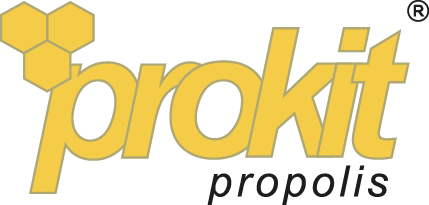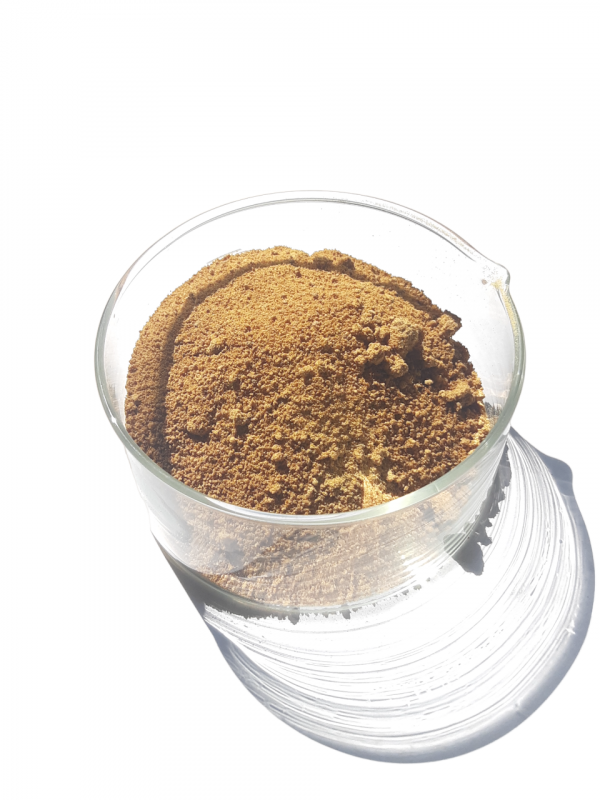EXTRACTS
SPECIFICATION SHEET
symbol: DEP/40/03
| Product | PROPOLIS DRY EXTRACT 40% | |
| Name of raw material | Propolis | |
| Solvent | Ethanol 96% (V/V) \ph.Eur.1317(4100102) | |
| Drug – extract ratio (DER) | 2.5 : 1 | |
| Composition | Native extract 40% | |
| Guar gum 45% | ||
| Silicon dioxide 15% | ||
| Purpose of use | Intermediate for food products and foodstuffs | |
| Quality data | Acceptance criteria | Method |
| Characteristics | consistency: free-flowing powder; colour: yellow-orange to brown, odour: aromatic, characteristic of propolis | organoleptic |
| Loss on drying | not more than 8.0% (m/m) | Ph.Eur.2.8.17 |
| Total ash | max. 10% (m/m) | Ph.Eur.2.4.16 |
| Content of flavonoids as Catechin equivalent | not less than 10% (m/m) | spectrophotometry /AlCl3 complexation |
| Content of phenolic compounds as Gallic acid equivalent | not less than 15% (m/m) | Spectrophotometry /Folin-Ciocalteu reaction |
| Residue of ethanol | not more than 1% (m/m) | Ph.Eur.2.4.24 |
| Microbiological purity | ||
| Total aerobic microbial count (TAMC) | max. 50 000 [CFU/g] | FP 2.6.12 |
| Total combined yeasts/moulds count (TYMC) | max. 500 [CFU/g] | FP 2.6.12 |
| Escherichia coli | absent in 1g | FP 2.6.31 |
| Salmonella | absent in 25g | FP 2.6.31 |
| Staphylococcus aureus | absent in 1g | FP 2.6.13 |
| Package | double polyethylene bag and cardboard; other packages are allowed at customer’s request | |
| Labelling | name and code of product, batch number, production date, shelf life, net mass, gross mass, tare | |
| Storage | stored in a well-closed container, protected from moisture and light, at the temperature not exceeding 25°C | |
| Shelf life | 2 years |
The dry propolis extract from PROKIT, composed of 40% pure propolis extract, 45% guar gum, and 15% food-grade silica, can be used for numerous purposes, especially in the food, pharmaceutical, and cosmetic industries. Here are some examples:
1. Dietary Supplements
It can be used as an ingredient in dietary supplements that support the immune system and have antioxidant and anti-inflammatory properties. Thanks to the presence of guar gum, which acts as a natural thickener, this product can easily be processed into capsules or tablets.
2. Cosmetic Preparations
Propolis extract is valued in cosmetics for its antibacterial and regenerative properties. The dry extract can be added to cosmetic products such as creams, masks, toners, or soaps designed for problematic skin or skin requiring regeneration.
3. Functional Foods
Due to the presence of guar gum, a natural thickener and stabilizer, the dry propolis extract can be added to food products such as energy bars, beverages, or functional yogurts. Propolis can provide these products with additional benefits, such as antibacterial or anti-inflammatory effects.
4. Beekeeping Products and Honey-Based Preparations
Combined with honey or other bee products, the dry propolis extract can be used to create fortifying preparations, such as propolis-enriched honey. The dry form of the extract allows for easier control of dosage and mixing in such products.
5. Medicinal and Anti-Inflammatory Preparations
Due to the antibacterial, antiviral, and anti-inflammatory properties of propolis, the extract can be an ingredient in ointments, throat sprays, lozenges for sore throats, or other topical preparations.
6. Stabilizer and Carrier of Active Substances
Guar gum and food-grade silica can serve as carriers that stabilize the propolis extract and facilitate its application in various formulations. Additionally, silica prevents the product from clumping, making it easier to store and use in production.
With these properties, the dry propolis extract can be used flexibly across various sectors, including dietary supplements, cosmetics, and functional foods.

